|
|
|
|
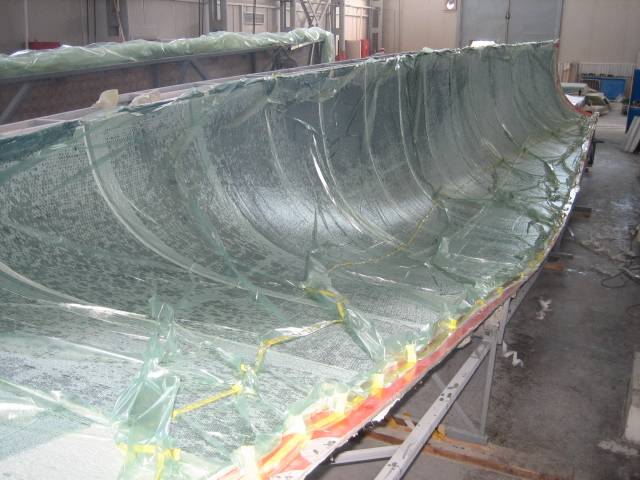 A layer of a gelcoat is laid on the mould. Then layers of vinylester resin with A layer of a gelcoat is laid on the mould. Then layers of vinylester resin with 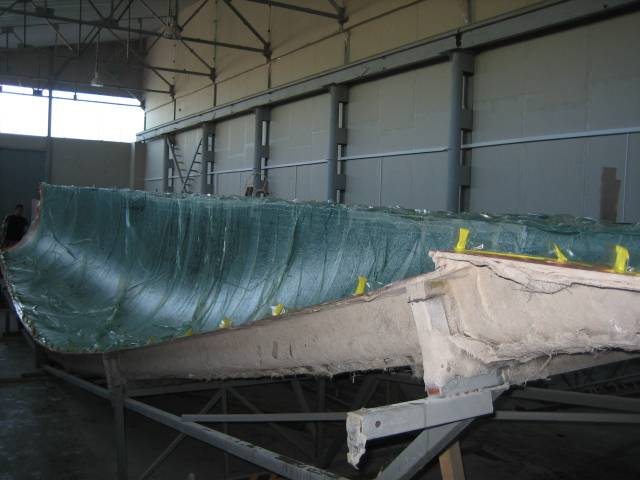 glass fibre mat are applied (to improve adhesion between gelcoat and epoxy resins and also to prevent influence of harmful environment - first of all of water influence upon the hull structure). glass fibre mat are applied (to improve adhesion between gelcoat and epoxy resins and also to prevent influence of harmful environment - first of all of water influence upon the hull structure).
Hull construction consists of three layers of E-glass with total weight of 2 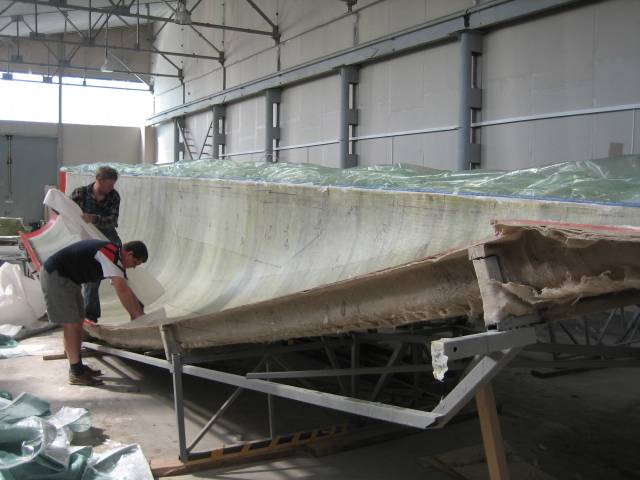 kg/m2 and of 10 layers of additional reinforcements of E -glass. Foam Herex and balsa with density of 75-100 kg/m3 are used as a sandwich. kg/m2 and of 10 layers of additional reinforcements of E -glass. Foam Herex and balsa with density of 75-100 kg/m3 are used as a sandwich.
The last operations are bringing together two halves of the mould and gluing of the centerline with continuous layers of E -glass on epoxy resin in way of bearing 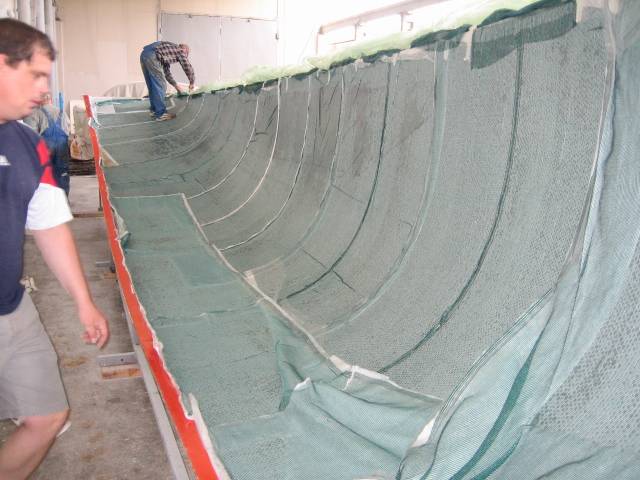 constructive loads: place of keel fastening, place of rudder blade bonding, place of engine fixation. All these procedures are much more detailed. After lay-up of each layer of glass, foam etc. vacuumization with the use of vacuum bags is carried out. constructive loads: place of keel fastening, place of rudder blade bonding, place of engine fixation. All these procedures are much more detailed. After lay-up of each layer of glass, foam etc. vacuumization with the use of vacuum bags is carried out.
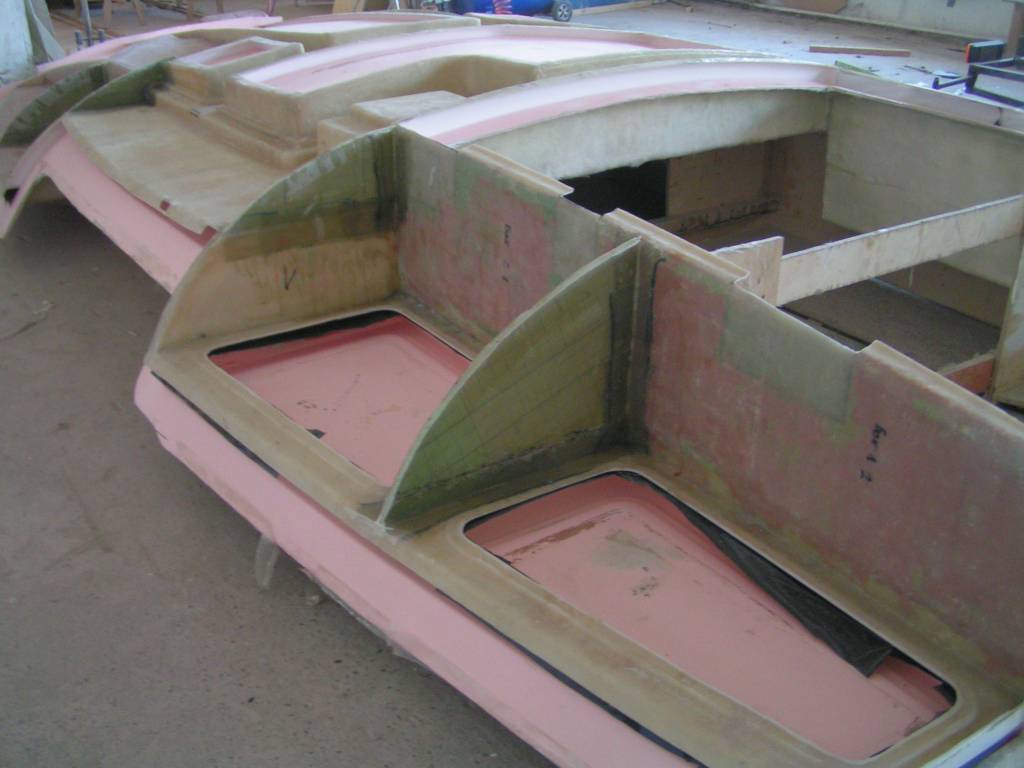 Deck construction consists of four layers of E -glass with total weight of 2,4 kg/m2 and of up to 8 layers of additional reinforcements in way of the biggest load. Deck construction consists of four layers of E -glass with total weight of 2,4 kg/m2 and of up to 8 layers of additional reinforcements in way of the biggest load.
Foam Herex and balsa with density of 75-100 kg/m3 are used as a sandwich. In places where 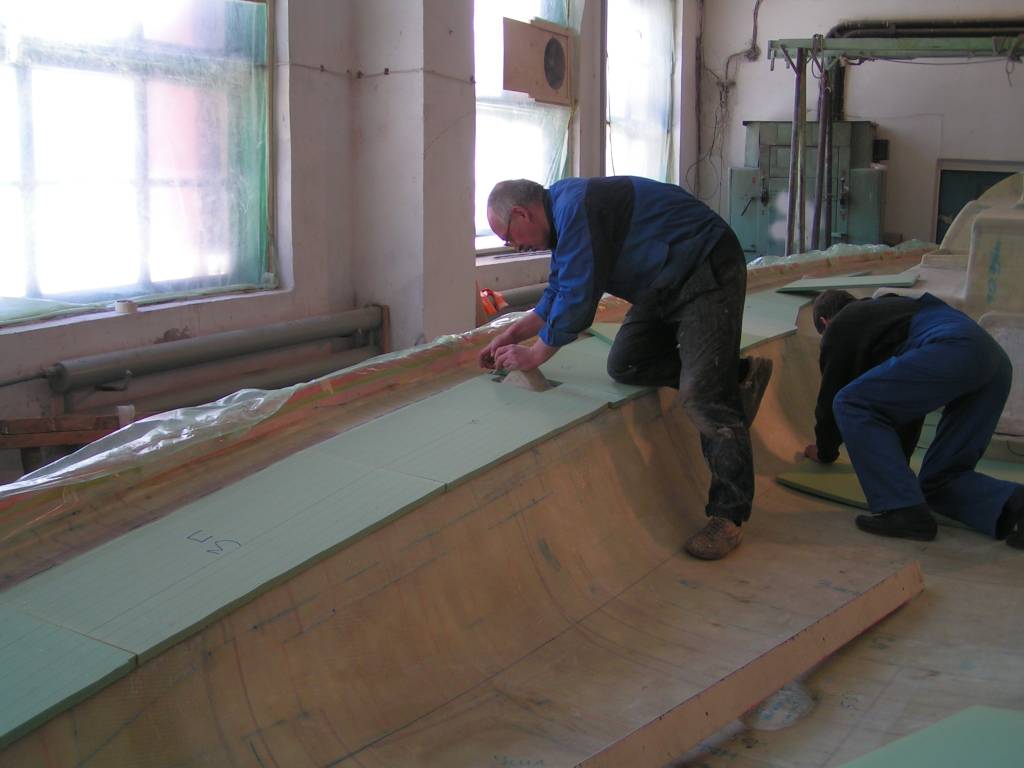 hull fittings are fastened continuous layer of glass is made. hull fittings are fastened continuous layer of glass is made.
Hull bonding with the deck, interior structures pasting in, is made with the use of epoxy resin with filler and further gluing with wet corners on 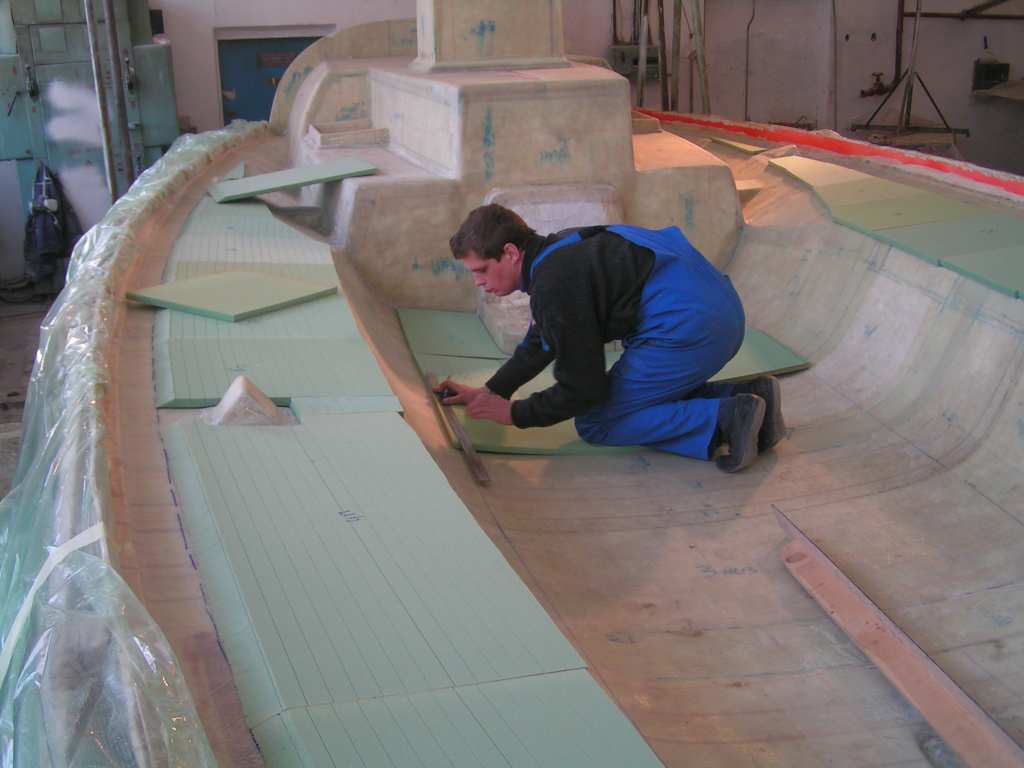 the base of fiberglass and epoxy resin. the base of fiberglass and epoxy resin.
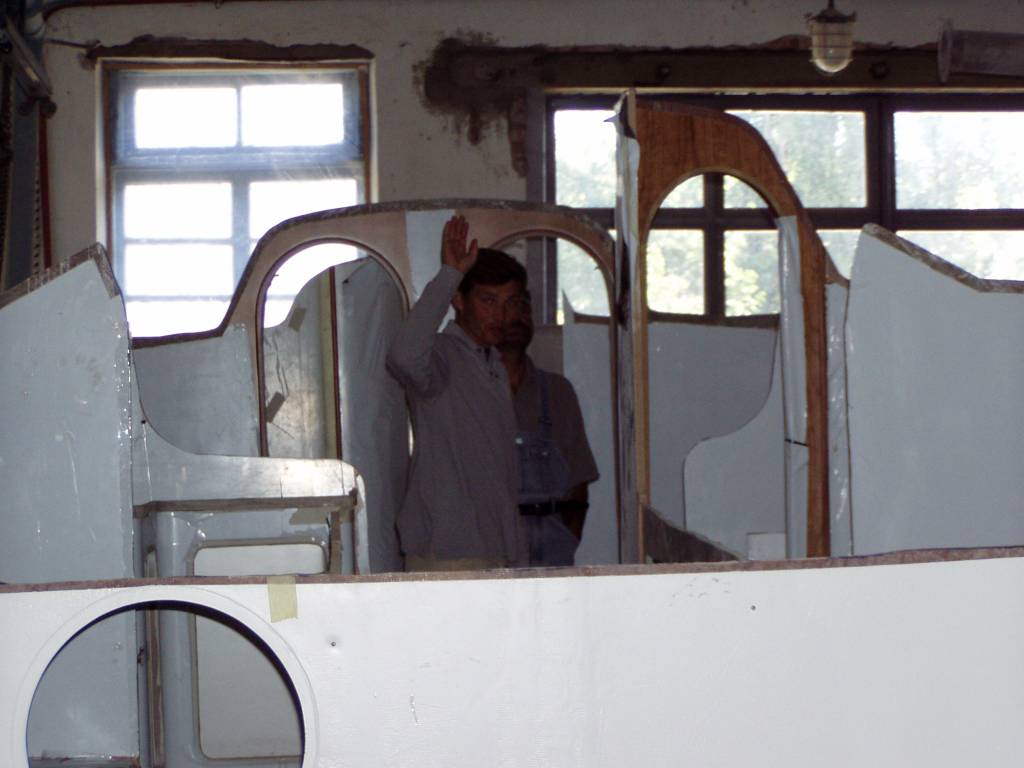 Internal structures, furniture, bulkheads are made by similar technology in moulds or on molding tables, but depending on the interior, furniture and bulkhead details may not be covered with gelcoat. When the interior is being made, rea Internal structures, furniture, bulkheads are made by similar technology in moulds or on molding tables, but depending on the interior, furniture and bulkhead details may not be covered with gelcoat. When the interior is being made, rea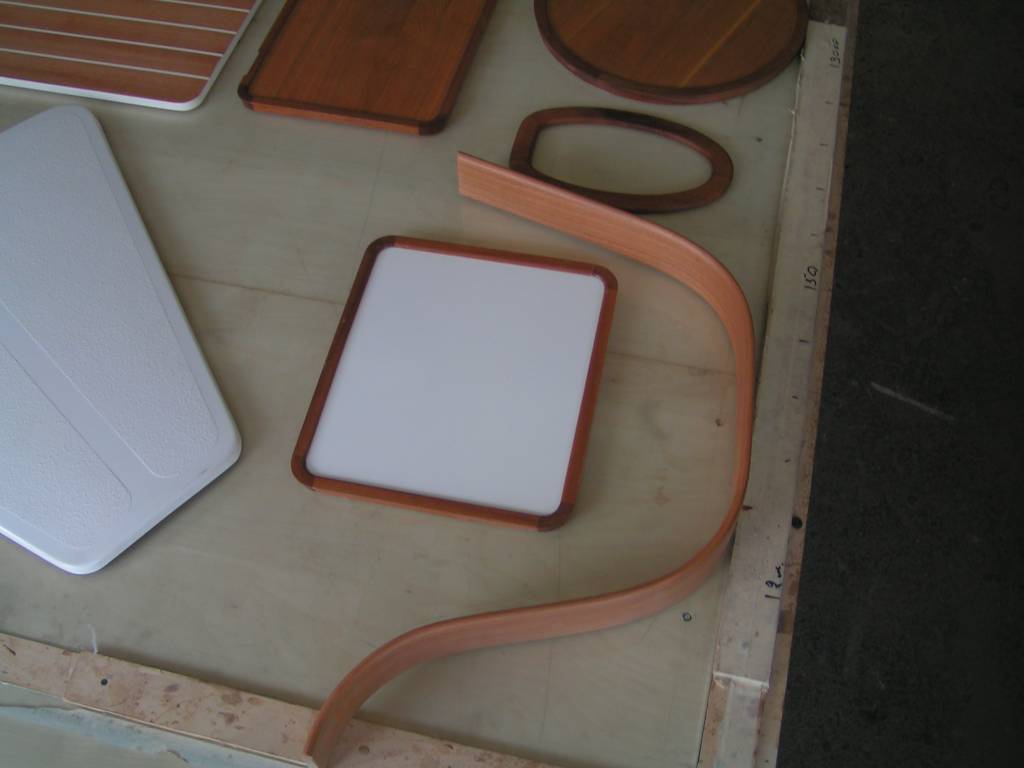 dy furniture, bulkhead, soles details etc. are covered with veneer. dy furniture, bulkhead, soles details etc. are covered with veneer.
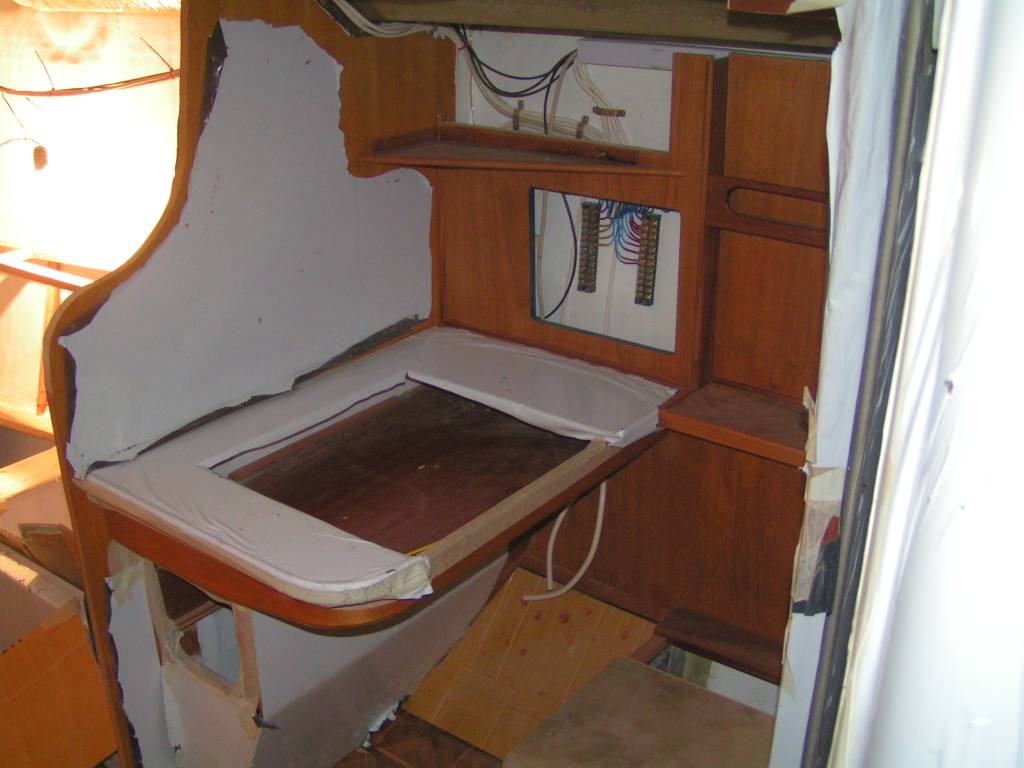 Veneer of mahogany, teak and Canadian cherry-tree is used for finishings of bulkheads, furniture and soles. Mahogany and teak are used for furniture details made of solid massive. Veneer of mahogany, teak and Canadian cherry-tree is used for finishings of bulkheads, furniture and soles. Mahogany and teak are used for furniture details made of solid massive. |
|

 Shipyard
Shipyard Our team
Our team  Competitions
Competitions  Contacts
Contacts



 A layer of a gelcoat is laid on the mould. Then layers of vinylester resin with
A layer of a gelcoat is laid on the mould. Then layers of vinylester resin with  glass fibre mat are applied (to improve adhesion between gelcoat and epoxy resins and also to prevent influence of harmful environment - first of all of water influence upon the hull structure).
glass fibre mat are applied (to improve adhesion between gelcoat and epoxy resins and also to prevent influence of harmful environment - first of all of water influence upon the hull structure).  kg/m2 and of 10 layers of additional reinforcements of E -glass. Foam Herex and balsa with density of 75-100 kg/m3 are used as a sandwich.
kg/m2 and of 10 layers of additional reinforcements of E -glass. Foam Herex and balsa with density of 75-100 kg/m3 are used as a sandwich. 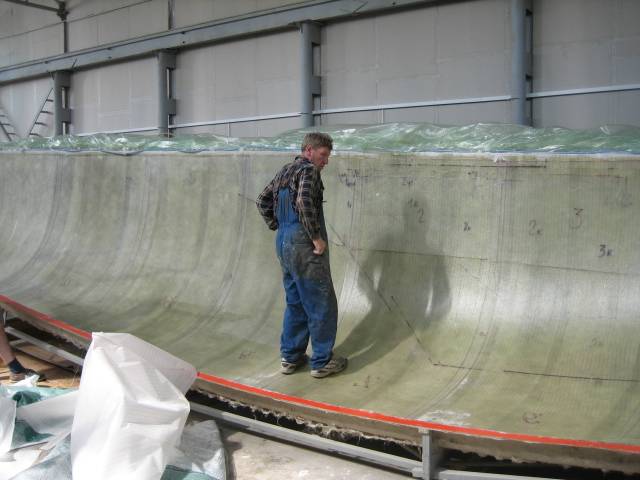
 constructive loads: place of keel fastening, place of rudder blade bonding, place of engine fixation. All these procedures are much more detailed. After lay-up of each layer of glass, foam etc. vacuumization with the use of vacuum bags is carried out.
constructive loads: place of keel fastening, place of rudder blade bonding, place of engine fixation. All these procedures are much more detailed. After lay-up of each layer of glass, foam etc. vacuumization with the use of vacuum bags is carried out.
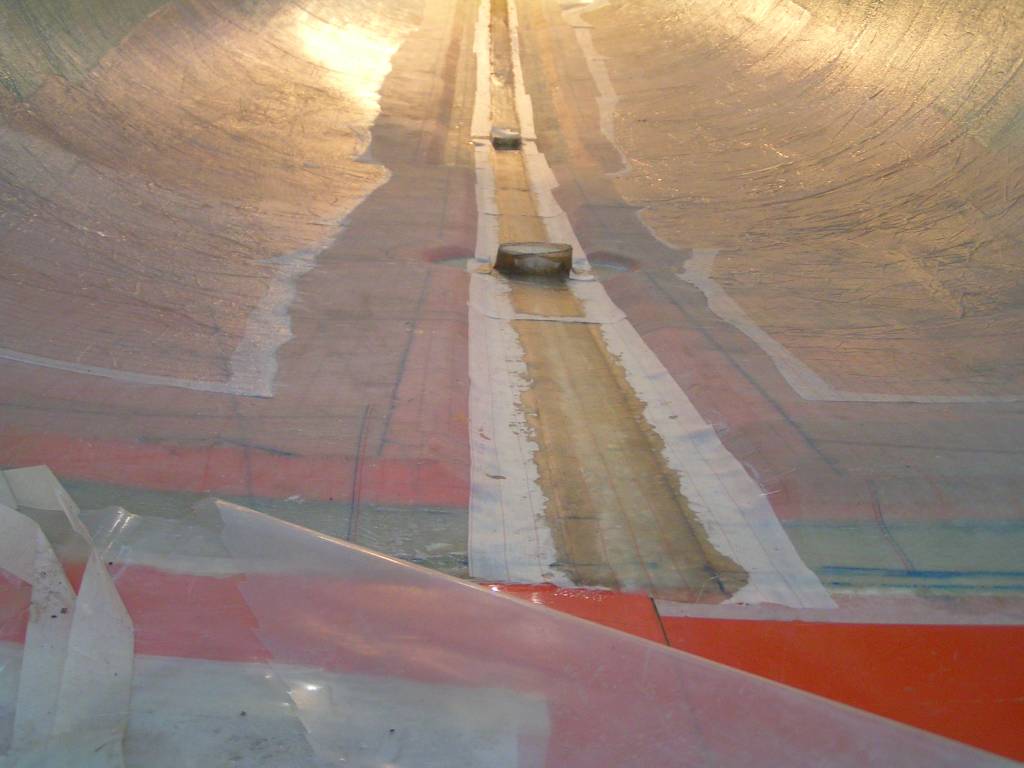
 hull fittings are fastened continuous layer of glass is made.
hull fittings are fastened continuous layer of glass is made. the base of fiberglass and epoxy resin.
the base of fiberglass and epoxy resin. Internal structures, furniture, bulkheads are made by similar technology in moulds or on molding tables, but depending on the interior, furniture and bulkhead details may not be covered with gelcoat. When the interior is being made, rea
Internal structures, furniture, bulkheads are made by similar technology in moulds or on molding tables, but depending on the interior, furniture and bulkhead details may not be covered with gelcoat. When the interior is being made, rea dy furniture, bulkhead, soles details etc. are covered with veneer.
dy furniture, bulkhead, soles details etc. are covered with veneer.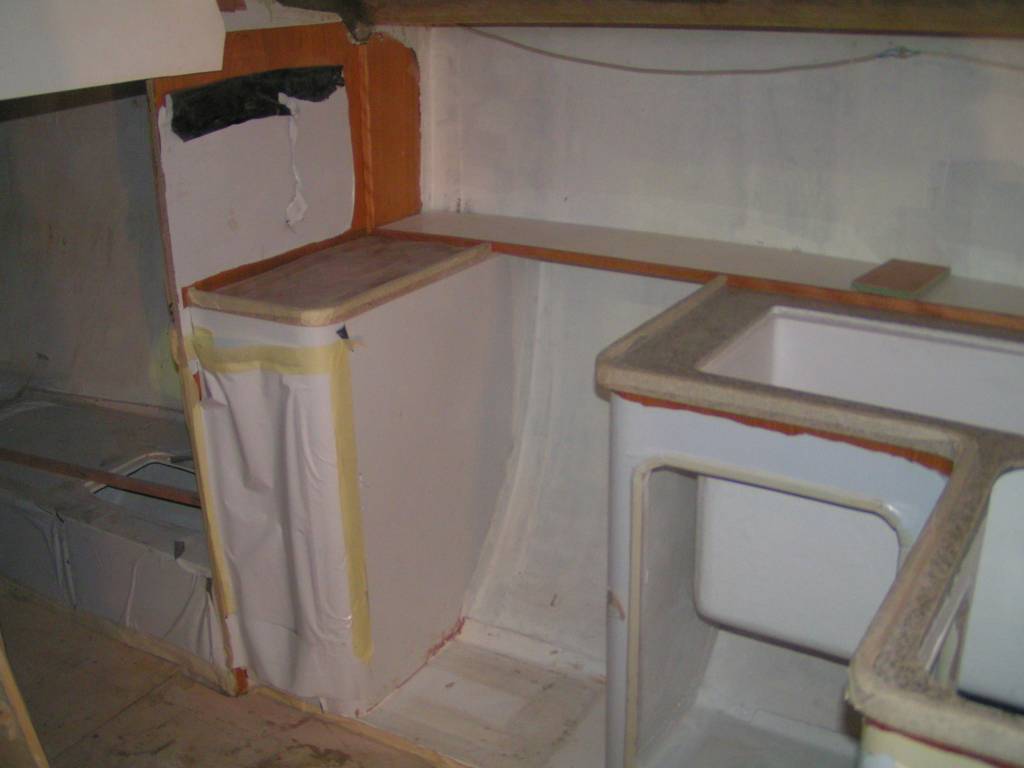
 Veneer of mahogany, teak and Canadian cherry-tree is used for finishings of bulkheads, furniture and soles. Mahogany and teak are used for furniture details made of solid massive.
Veneer of mahogany, teak and Canadian cherry-tree is used for finishings of bulkheads, furniture and soles. Mahogany and teak are used for furniture details made of solid massive.